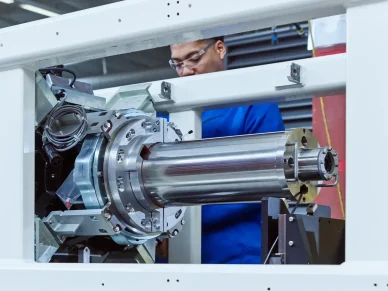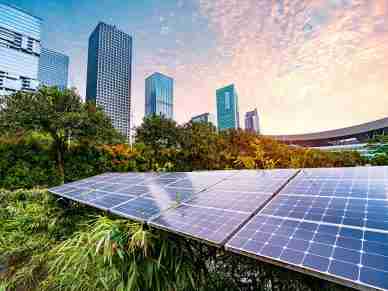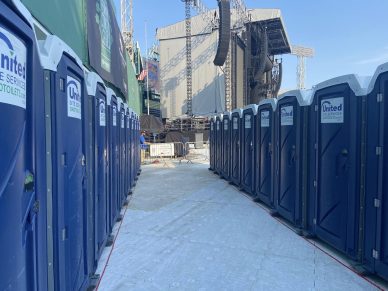View This Article in BOSS Magazine
Industrial design pioneer Dastur Energy is aiming to create a zero-carbon industrial environment

In March of this year, the U.S. made the largest investment in industrial decarbonization in its history, earmarking $6 billion to gain a “once-in-a-generation first mover advantage in the emerging global clean energy economy,” according to the White House. One third of global carbon emissions come from industry, particularly from the production of iron and steel, aluminum, cement and concrete, chemicals, and pulp and paper. The climate challenges of these sectors, known as “hard to abate” niches, are the province of the bold thinkers at global engineering technology and consulting firm Dastur Energy.
Founded in 1955, Dastur is known worldwide for their expertise in advancing the design and construction of large-scale industrial plants. Over the decades, the engineering and technology firm has substantially grown their global footprint, with a dynamic presence in North America and EMEA. With that growth they’ve moved in new directions, leveraging their expertise to advance clean energy systems for industry.
In a handful of years, Dastur has become a recognized leader in the industrial-scale clean energy transition space, and as such, their ability to work across geographies is fundamental. Their globe-spanning customer list reads like a glossary of the biggest industrial groups in the world, including Cleveland-Cliffs of the U.S., India’s Tata Steel, IHI and Mitsui & Co. of Japan, UAE’s ADNOC, Canada’s Stelco, and Luxembourg’s ArcelorMittal.

“With our experience and legacy in the industry, we are addressing the climate challenge from the perspective of reducing the emissions from the industrial sectors to zero,” said Dastur CEO Atanu Mukherjee. “While we continue to advance industrial plant design, we are working to make them cleaner. We work with large steel producers such as Cleveland-Cliffs, large power companies like Duke Energy, for example in the U.S., and large aluminum manufacturers in different parts of the world to figure out the best way to adopt the right kind of technologies and strategies to address this climate challenge most effectively.”
Steel, plastic, aluminum, and other carbon emitting materials have become essential to living our lives. From the cars we drive to the kitchen table, the materials used to create modern society produce emissions when they are manufactured. That extends to food as well, as agricultural fertilizers produce substantial CO2.
“If we were to stop producing fertilizers, half the population of the world would starve, so we have this conundrum,” he posited. “On one hand we have necessary consumption, but at the same time we need to do it in a manner that is cleaner. There's no going around it and unfortunately, we do not have technologies today which can make that mechanism of producing steel into something different that doesn’t emit CO2.”

Thanks to governmental pressure, investor concerns, and public outcry, the progression towards cleaner manufacturing has accelerated in the past decade. Commitments to zero-carbon manufacturing are increasing, which is both exciting and encouraging. But Mukherjee is quick to point out that another barrier looms. “(Industry) has been moving in a direction, thankfully, to support cleaner mechanisms of production which reduce their mission to lower emissions to zero at some point of time. But to do so, we must understand that there is a cost.”
He estimates that for producing steel in a manner that doesn’t emit CO2, the cost of that steel will go up by at least 100%. “Then you and I have to pay for that in some form, and that upsets the whole mechanism of functioning in society, as it is organized today. So government has got to come in in some way to support that cost, and that's what the Biden administration has done.”
Legislation around decarbonization that provides financial incentives is a strong motivator for cleaner technology adoption, and despite its complexity, the journey has already started. “If you look at the enablers driving the industry towards the adoption of a cleaner mechanism of production, it has to do with two things. One is that governments like the United States have given incentives to offset the cost of reducing suite to emissions,” he said. In other parts of the world, like the European Union, industries are subject to carbon tax.
Emissions abatement technologies are evolving, and significant innovation in the marketplace is aided by funding programs and incentives. As Mukherjee put it, these opportunities drive “a lot of change in technologies and hopefully the creation of some breakthrough technologies which can dramatically alter the landscape in terms of the mechanisms of production with zero carbon emissions.”
Changing consumer psychology also has a role to play. “Until recently, people thought that carbon dioxide was something that they dump in the waste yard without paying for it. Gradually people will realize that CO2 emission has got a cost and we have to pay for it,” he acknowledges. “A confluence of the incentives, taxes, and consumer behavior over time determines what the cost-benefit is going to be for a specific product in the marketplace. Those are some of the mechanisms which are driving the cost-benefit equation in the industrial products or industrial materials or industrial commodity space as we move forward.”
Dastur is extremely pragmatic about what they propose. “We want to build or solve problems that address societies’ problems at a large scale. A lot of people do a lot of fundamental innovations which are very, very essential, but we look at how to make them scalable and economically viable,” he noted. “How do you make it practical and adaptable so that society benefits at large in a short period of time? We architect commercial scale solutions, that are techno-economically optimized for successful deployment and business impact.”

Mukherjee keeps a laser focus on trends in decarbonization technologies, and in his opinion new approaches over the next 15-20 years will significantly change the landscape of industrial materials production.
Direct air capture, a mechanism used to draw carbon dioxide from the air, is one such nascent technology. To greatly oversimplify, direct capture pulls CO2 out of the air and processes it so it can be safely buried underground. If the technology evolves and scales for commercial use, it will have a significant impact on the environment. “That's one example of how we innovate,” he said. “There are other breakthrough technologies that people are working on, new mechanisms in the production of steel or cement, which are much less emissive now.
“We are very customer customer centric, business impact focused, passionate, and driven in terms of what we do to bring about clean energy transition at large scale,” Mukherjee concluded. “And of course, our mindset is fundamentally driven by goals and objectives driven by rigor, analytics and the use of advanced tools and technologies. And so, I think the combination of these makes us fairly unique in terms of addressing this grand challenge that we have in the world, to help society – our children and grandchildren – to have a much better life.”
Dastur Energy is a global energy technology company that is leading the way in the field of clean energy, with a strong track record of pioneering innovative projects in North America, the Middle East, and India. As one of the leaders in Clean Energy Transition & Carbon Management solutions for the ‘hard to abate’ industry, Dastur Energy’s expertise and commitment to sustainable energy solutions has won the company several projects in design, engineering, techno-economic assessments, and technology & policy roadmap development from global enterprises as well as respected funding agencies like the US Department of Energy, the US Trade and Development Agency, the Government of India, and the G20 Presidency.
The company envisions enabling an affordable clean energy future through industrial decarbonization, carbon capture, low-carbon alternative fuels and low carbon transformation of solid fuels and hydrocarbons.
Equipped with its own proprietary IP and significant clean energy solution delivery experience, Dastur Energy offers complete end-to-end commercial-scale clean energy solutions that deliver significant sustained long-term techno-economic impact. The solutions areas include - industrial carbon capture, clean hydrogen, CO2 to products, green methanol, green steel, green cement, and other clean chemicals. With a focus on driving change toward a more sustainable future, Dastur Energy continues to lead the way in implementing innovative energy solutions across the globe.
Corporate Office
501 Congress Ave., Ste. 150, Austin, TX 78701
Phone Number: +1 512.823.0398
Email: info@dasturenergy.com
Homepage Link: https://www.dasturenergy.com/
LinkedIn: https://www.linkedin.com/company/dastur-energy/about/















